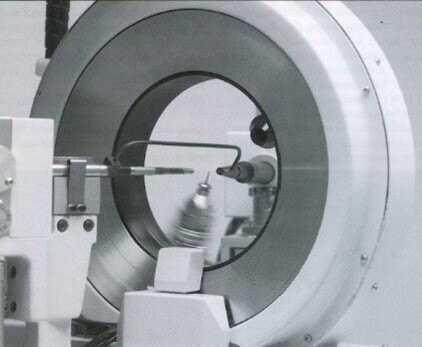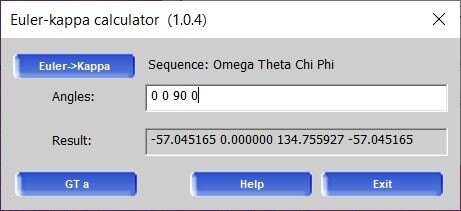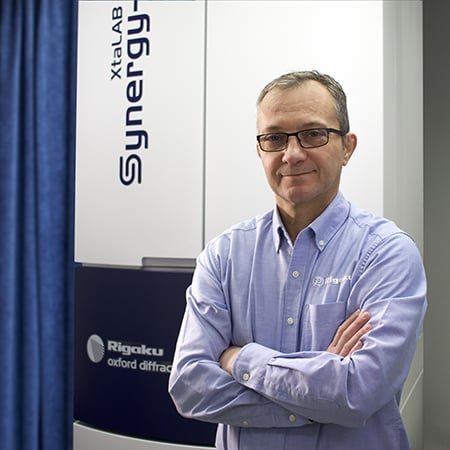CrysAlisPro Tip
The Euler-kappa Calculator
What is it?
A calculator to convert Kappa-goniometer angles to Eulerian (and back).
Why should I use it?
It’s a convenient way to move to positions in an orthogonal coordinate system.
How can I use it?
Old-school crystallographers may remember the “Eulerian cradle” design for crystal orienting on a diffractometer, which often included a full 360° chi circle, as on the Rigaku AFC-5, AFC-6, or AFC-7, where the chi axis is always perpendicular to the omega axis. It’s slightly easier to calculate how to position a particular reflection onto a particular point in space (important with point detectors where every reflection was measured in the horizontal plane of the beam). And some of us still think in terms of the chi angle; i.e., putting the sample at χ=90° when, for example, aligning a high-pressure cell on the diffractometer.

Many of us use the command line in CrysAlisPro to drive the angles to a specific location; i.e., the command ‘gt a -10 0 50 12’ moves to omega=-10°, detector_theta=0°, kappa=50° and phi=12°. Less common but useful is to move to Eulerian angles: ‘gt e 0 0 90 0’ to move to chi=0° (with others at Eulerian zero). This is approximately the same as ‘gt a -57 0 134 -57’ but a lot easier to visualize!
You can access a (currently undocumented) menu in CrysAlisPro by typing ‘gt e’ with no other parameters. The following appears:

This allows the transformation from one coordinate system to the other. A press of the blue Euler→Kappa button switches the calculation to the other direction. If performed in online mode, the GT a button populates the command-line with the resulting ‘gt a …’ command.
Enjoy another way to test your 3-dimensional visualization!
Author

Rigaku Americas | Texas, USA
Lee Daniels is a senior applications scientist for Rigaku Americas. Lee spent 15 years as an academic crystallographer and Rigaku user before joining Rigaku over 20 years ago. Although not associated with Rigaku for the entire time since then, Lee considers his function as a Rigaku scientist to be his calling and passion. He also spent some time representing the Cambridge Crystallographic Data Centre in North America. Lee was first exposed to crystallography while working towards his PhD under Prof. Frank Albert Cotton at Texas A&M University. His wife Chris is a chemical engineer, and his two grown children now live and work in Europe. Lee enjoys cycling, hiking, and driving his vintage Triumph, and plays bass guitar in his church’s worship band. Want to learn more? Connect with Lee Daniels, PhD LinkedIn .

Subscribe to the Crystallography Times newsletter
Stay up to date with single crystal analysis news and upcoming events, learn about researchers in the field, new techniques and products, and explore helpful tips.

Contact Us
Whether you're interested in getting a quote, want a demo, need technical support, or simply have a question, we're here to help.
